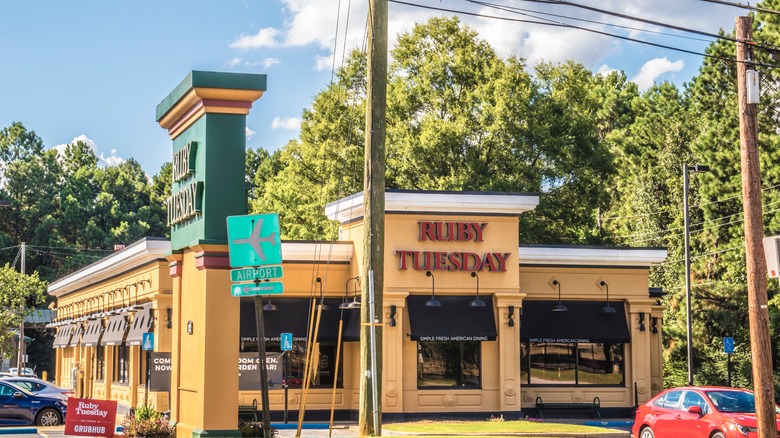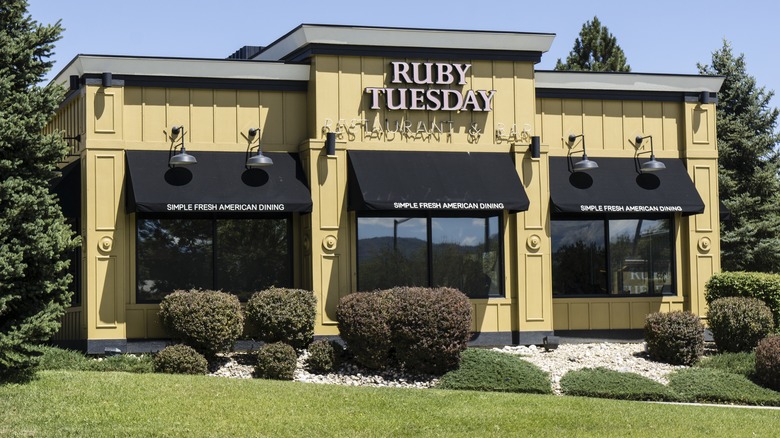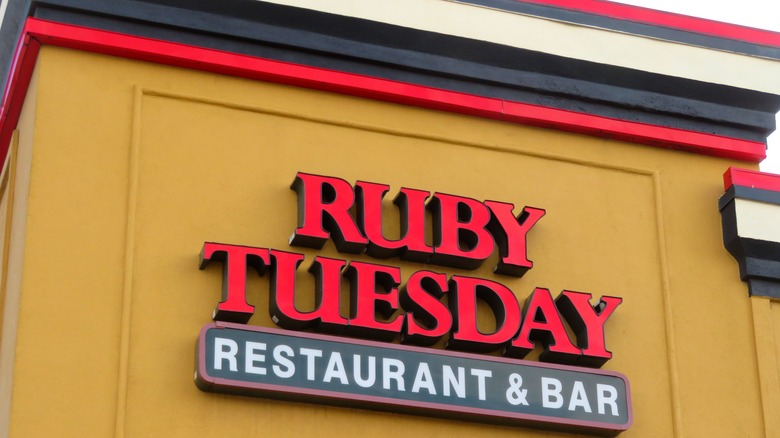A Beloved Friendly Restaurant May Be On The Brink Of Bankruptcy
This century, and especially the past five years, has been a rough time for the chain restaurant industry. Bar and grills have been especially hard hit as the American consumer has moved on to new things. Ruby Tuesday has been one of the prime casualties of this chain-shaking change in the restaurant landscape.
The company's glory days were in the late 1990's thru early 2000's. Since then it has been a long, slow slide into near-oblivion for Ruby Tuesday. The corporation revealed in 2017 that it would be selling up. Its size had always been against the company. Ruby Tuesday simply never commanded the nationwide name recognition of larger rivals TGI Fridays, Applebee's, or Chili's.
The restaurant menu was novel when it was new. Ruby Tuesday showcased its signature large Endless Garden Bar that contains over 55 fresh salad ingredients. Its menu boasts a wide variety of handcrafted burgers and sandwiches while its ribs gained fame for having five standout flavors. Founded in 1972 next to the University of Tennessee campus, the company named for a Rolling Stone song has limped past its 50 year anniversary. According to MSN, this year may be the final one for the once-beloved restaurant chain.
What happened to Ruby Tuesday's fan base and business model
Ruby Tuesday's serious issues are primarily two-fold. Chain restaurants such as Ruby Tuesday are no longer pulling high volumes of customers who instead want to support unique eateries that have something new on their menu — largely, this means seasonal, fresh, and local ingredients as opposed to the cookie-cutter style of suburban chains.
Ruby Tuesday locations have historically been located in or adjacent to shopping malls, and Ruby Tuesday always relied on foot traffic in malls to fill up the restaurants. American malls are now in terminal decline and their stores and eateries are sinking along with them. Ruby Tuesday tried to push its delivery and takeout channels with mixed results. This action cannibalized its leading margin menu items of drinks, according to Mashed.
There was a time when going to eat at Ruby Tuesday was a reason for going to the mall. Shopping malls were once the place to be seen going for drinks and dinner after a shopping excursion. The chain's troubles date back to 2007 when it peaked at 945 stores. By 2018 it had lost over 400 stores and was down to 544 locations. Heading into the Covid era, its traffic only cratered further. In December of 2017 the company was bought by a private equity company.
Ruby Tuesday again is on the verge of bankruptcy after years of declining sales
Ruby Tuesday has held on despite its outdated menu and falling sales. The price to do so has been an ever shrinking store footprint. Analysts have warned that 2025 could be its final year before the restaurant permanently closes down its last locations, MSN points out.
The company's best efforts to modernize consistently have failed in the face of stiff and determined competition. In 2020, the company filed for Chapter 11 Bankruptcy as the knockout punch combination of intense competition and the Coronavirus pandemic proved too much for it to survive in tact. The corporation only recently came out of bankruptcy as a far tinier restaurant chain.
Ruby Tuesday now finds itself walking down the dangerous path of other one-time beloved restaurant chains like Red Lobster, the iconic diner chain Denny's, and popular family friendly restaurant chain TGI Fridays. Barring a miracle, Ruby Tuesday may soon say "goodbye" like in the song lyrics it is based on.


